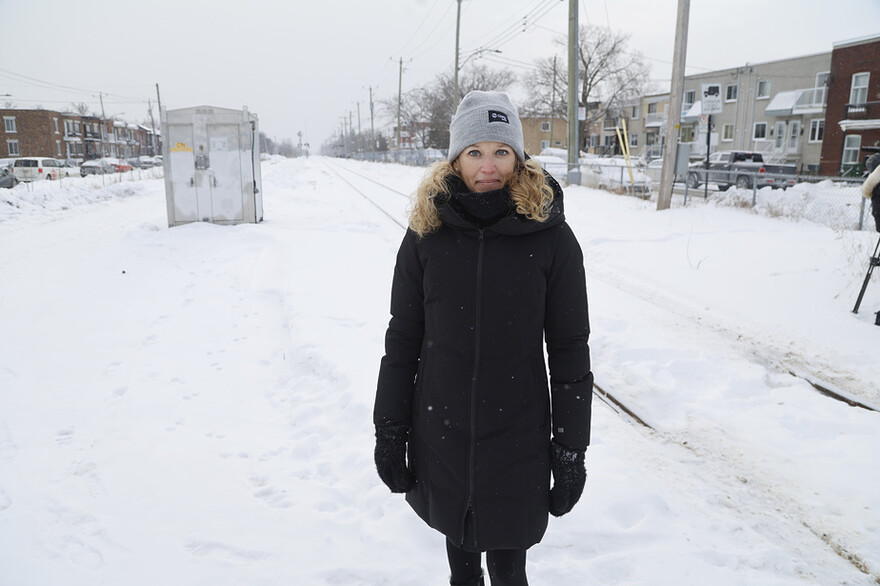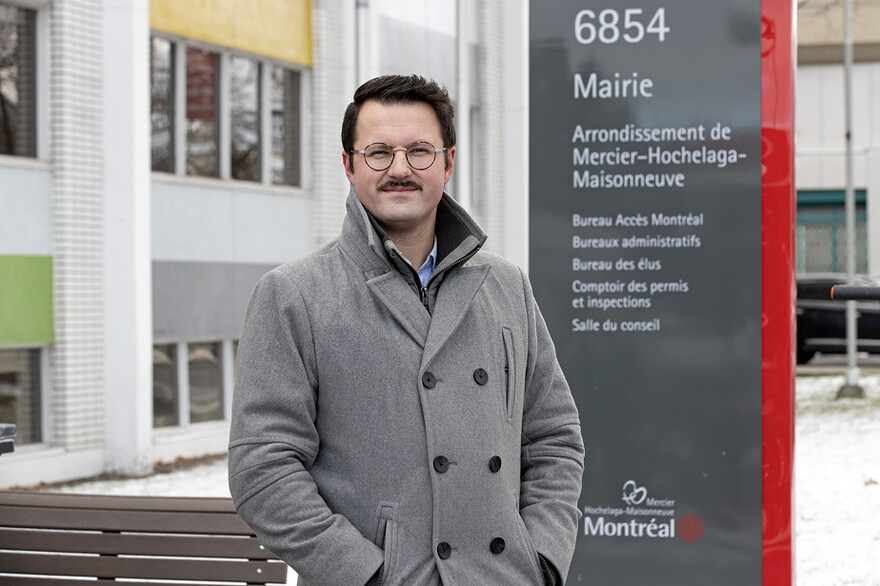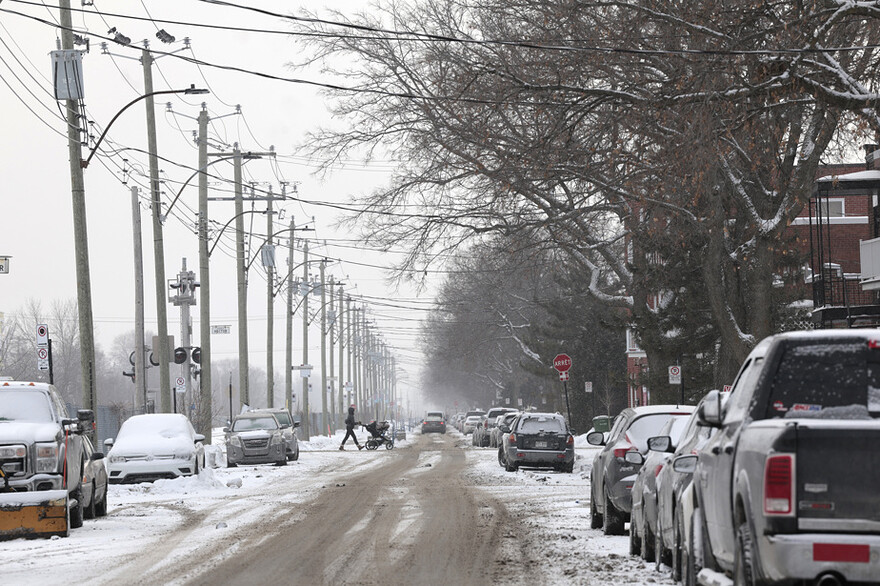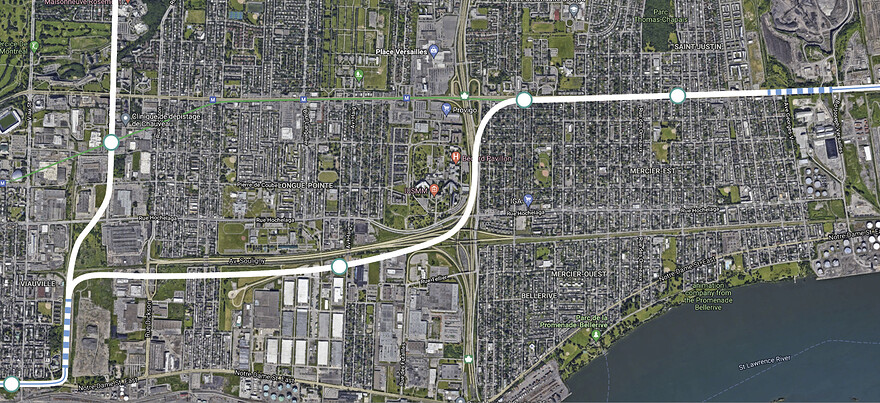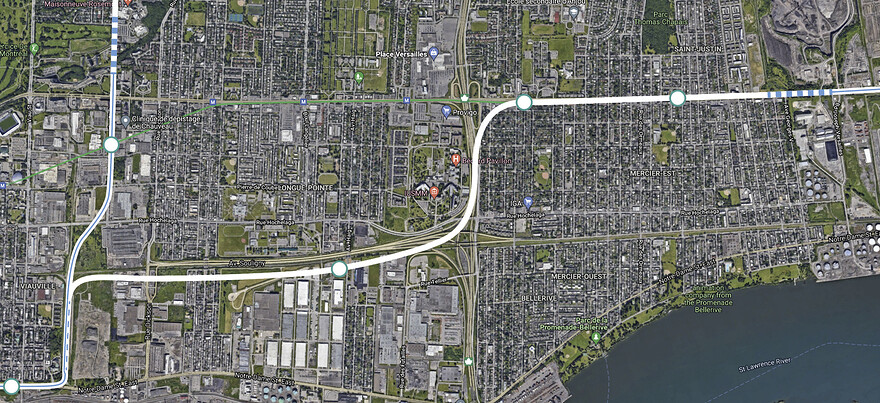
Experts worry proposed REM would weaken east-end transit
“They should have worked to complement existing services, not compete with them.”
Montreal Gazette | Jason Magder | Feb 04, 2022
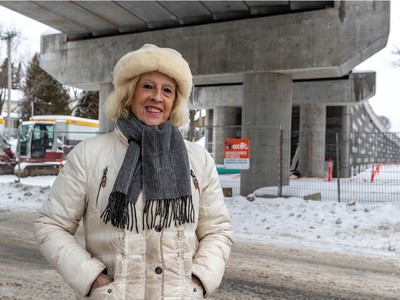
“Normally when you build a new project, it should increase the use of public transit and serve the needs of commuters. In this case, the REM de l’Est does neither of those things,” says urban-planning and transit expert Florence Junca-Adenot, seen at one of the REM support columns in Deux-Montagnes on Friday February 4, 2022. | PHOTO BY DAVE SIDAWAY /Montreal Gazette
A longtime transit expert says planners of the REM de l’Est should go back to the drawing board because the proposed $10-billion light-rail project would compete with and weaken existing services.
Florence Junca-Adenot, an associate professor of urban planning at UQAM and the first head of the Agence métropolitaine de transport, analyzed the proposal in recent weeks and concluded there are major flaws to the proposed route. It would begin at Central Station downtown, run along Notre-Dame St. and link to Pointe-aux-Trembles in the east and Montreal North in the northeast.
“Normally when you build a new project, it should increase the use of public transit and serve the needs of commuters. In this case, the REM de l’Est does neither of those things,” Junca-Adenot said.
Using publicly available data from the region’s Origine-Destination survey published in 2018, she concluded that among the residents of the east end served by the project, only 13 per cent travelled downtown daily for their commute before the pandemic. Among them, 82 per cent took public transit to get there, so there isn’t a large number of people that would make the switch to transit with the REM de l’Est. Most east-end transit users travel between destinations in their region, Junca-Adenot said, and the project does little to improve those connections.
By contrast, the stalled extension of the métro’s Blue Line by 5.5 kilometres to Anjou would serve far more people and incite many more to leave their cars at home, she said.
Among the 133,000 people the REM de l’Est hopes to serve, 94 per cent are already regular users of the métro’s Green Line and the Mascouche train line, and are projected to use the SRB Pie-IX bus network now under construction, Junca-Adenot said. The REM de l’Est would run parallel to those services and thus compete with them.
“The modification announced last month to take Souligny Ave. aggravates the situation; there is no more interconnection with the métro,” she said. “This type of route would weaken the existing transit network by taking away their riders, and the fares associated with those riders, so it will force transit operators to make cuts.”
Junca-Adenot added that according to agreements in place for the REM in the west, bus routes must be replanned in order to serve the new rail network. Because buses in the east end already serve the Green Line, Junca-Adenot is concerned that when the project is up and running, they will be diverted away from the métro to serve the REM.
Marc-André Carignan agrees. A writer specializing in urban planning, he said transit planners have not asked the right questions when it comes to the REM de l’Est.
“We have been talking about improving transit in the east for decades,” he said. “People are now saying this is the best project we’ve seen for the east, but is this really the best project for the east, or is it just better than what was proposed in the past?”
Carignan believes planners should reconsider the downtown portion of the route, which would save significantly on costs. Keeping the connection to the métro should be a no-brainer, he said.
“The strength of any public transit system is interconnectivity,” he said. “Disconnecting it from the métro creates a corridor that’s isolated, and a lot of people don’t need to go downtown every day. They go more north-south, east and west within the east end.”
Junca-Adenot is also concerned that in a time of financial strain for transit systems , the REM de l’Est would come with such a high price tag that it would force transit agencies to either make cuts or cancel other planned improvements to the network.
For example, the original REM is estimated to cost $438 million per year to run, based on an agreed fee of 72 cents per passenger per kilometre that will be charged to the Autorité régionale de transport métropolitain . While the fee for the REM de l’Est has not yet been announced, Junca-Adenot fears it will cost far more, because it is more expensive to build and proposes to serve fewer riders.
“The bill will be double,” she said.
Junca-Adenot said the ARTM should have intervened by now to propose a route that would strengthen rather than weaken existing transit structures.
“You can’t decide on a project by figuring out which route would be the most financially advantageous,” she said. “They should have worked to complement existing services, not compete with them.
“It’s clear it will divert money away from other projects.”
For transit lobby group Trajectoire Québec, it is alarming that the project would no longer link to the Green Line. Director general Sarah Doyon said her group originally asked REM builders CDPQ Infra to move the project off Sherbrooke St. to the existing Souligny Ave. rail corridor because of complaints from residents, but added that severing the link to the métro is not a good idea.
“For us, it’s a major inconvenience to lose the connection with the Green Line,” she said. “It seems very problematic.”
Doyon said Trajectoire Québec has been asking for a year to see studies on what impact the REM de l’Est would have on ridership for the SRB Pie-IX, the Green Line, the Mascouche train line and an extended Blue Line.
While all three critics say there are problems with the REM de l’Est project, they all believe it can be improved and should not be scrapped. But with limited budgets, decision-makers must ensure the money is spent wisely.
“It’s possible some users will go to the REM, and if there is a substantial gain of time, it’s worth it,” Doyon said. “But we also have to ask the question whether it’s worth it to develop a heavy transit project parallel to an existing heavy transit service.”

What’s Valérie Plante doing to make the REM light-rail line acceptable to East End residents?
il y a 2 mois
 - Montreal Gazette
- Montreal Gazette

